
views
Assessing the Door
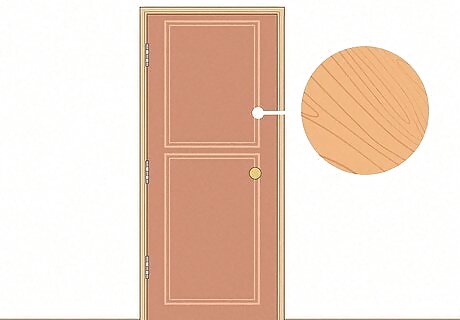
Examine the door and frame materials. If the door is made of metal or has a metal frame, you probably won’t be able to kick it down. If the door or frame are made of wood or a hollow-core material, you should be able to kick it down with minimal force. Exterior doors are usually made of solid-core material, such as chipped or shaved wood and laminate, and are harder to kick down. Interior doors are usually made from hollow-core material like hollow wood or fiberboard. These doors usually have no insulation or security, and require minimal force to break down. Solid wood doors are made of hardwood and require an average amount of force to kick in. Metal-clad doors are made from softwood with a thin metal covering and require an average to above average amount of force. Hollow metal doors are much heavier than other doors. They have a reinforcing channel around the edges and the lock mounting area, and some also have insulating material. They require maximum force; it may not be possible to kick these in.
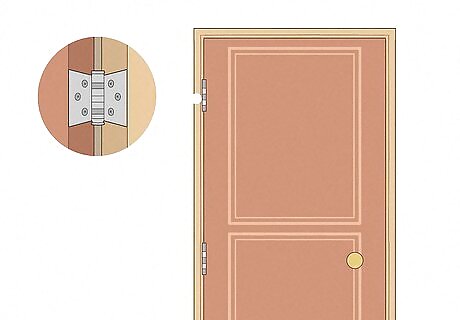
Check the hinges to see which way the door swings. Unless the door is made of flimsy materials, kicking it down will likely only work if the door swings away from you. Hinges are located on the side of the door that swings forward, so if you see hinges, you should avoid kicking down the door. Exterior doors for residential buildings, such as homes or apartment buildings, generally swing inward. Many commercial buildings, however, usually have exterior doors that open outward. If the door opens outward, try removing the door hinges. Keep in mind that many commercial door hinges have theft-proof hinge pins that do not allow them to be removed.
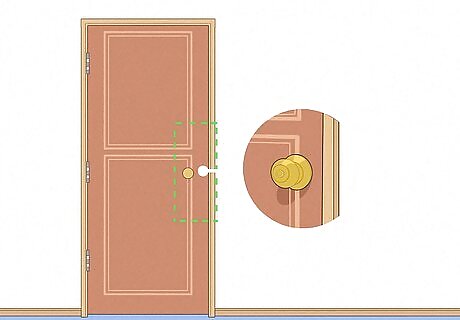
Find the weakest part of the door. First, look for where the lock is mounted. This is typically the weakest part of the door, so your kick should be aimed above or below this area. Other weak points include the frame and the latch.
Assuming the Correct Stance
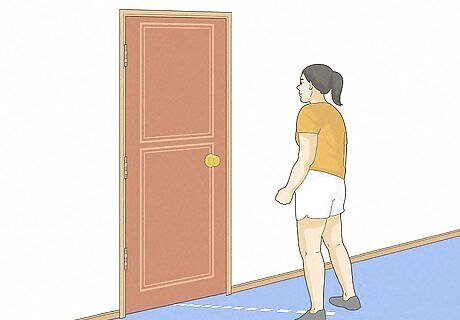
Stand about a leg’s length away, facing the door. Give yourself enough space to extend your leg for a firm kick. A leg’s length should be a few feet, but try extending your leg to the door to see what feels most comfortable. You should be able to place your foot flat against the door while keeping your knee slightly bent.
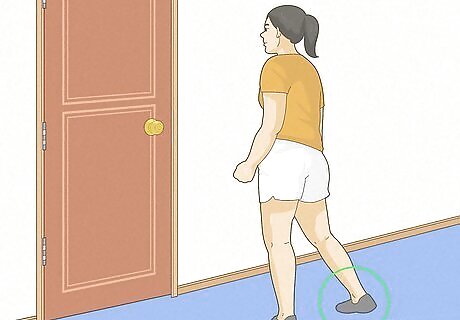
Prepare to kick with your dominant foot. This will give you maximum strength and impact. To prepare for the kick, place your dominant leg slightly closer to the door than your other foot.

Drive the heel of your standing foot into the ground. Firmly planting your standing foot will give you stability and let you push your momentum toward the door as you kick. The steadier you hold yourself, the stronger and more accurate your kick will be.

Keep your center of mass slightly in front of your back leg. This way, your body will have some forward momentum toward the door. When you kick, it should feel somewhat like you are "falling into" your target. Don't lean away from the kick, but keep your body upright as much as possible to keep from actually falling forward.
Kicking the Door Down
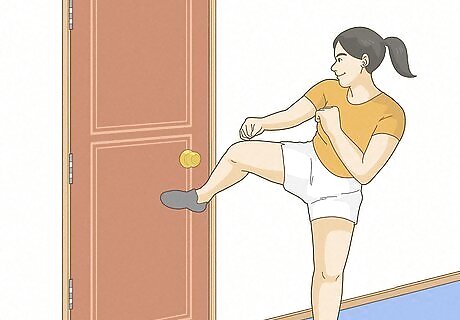
Aim for the area above or below the lock. You should never kick the lock itself--instead, kick the door itself just above or below the lock. Kicking the lock could break your foot. You can also aim just above the deadbolt or knob if you can’t locate a regular lock.

Kick with your foot completely flat. As it comes in contact with the door, your foot should remain flat and contact the door straight-on, horizontally (not upward). This will help you apply maximum force and protect you from potential injuries. The main area of contact should be your heel, not the ball of your foot or your toes.
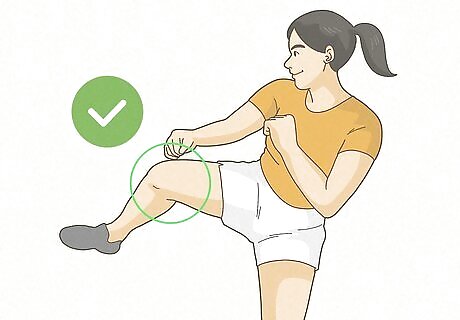
Keep your leg slightly bent. Never straighten your leg all the way when doing this type of kick. Make sure your leg is still slightly bent when your foot hits the target. Straightening your leg all the way can cause serious damage to the knee.
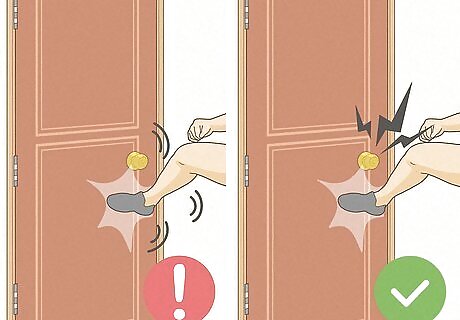
Listen before kicking a second time. If your first kick makes a dull thud noise, the door is likely made of reinforced material. If this is the case, kicking again will likely not work and may injure you. If you hear a splintering sound like kindling breaking, that means the frame is starting to break. Try a second or third kick if needed.




















Comments
0 comment